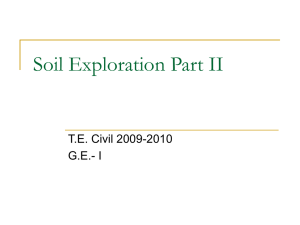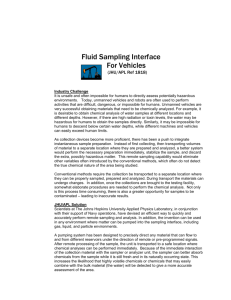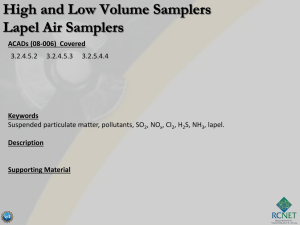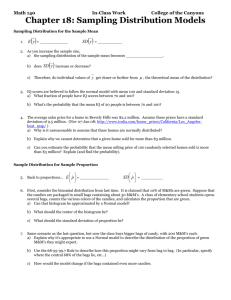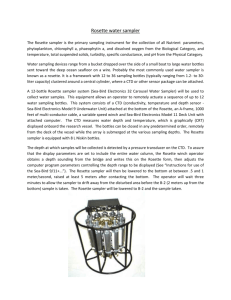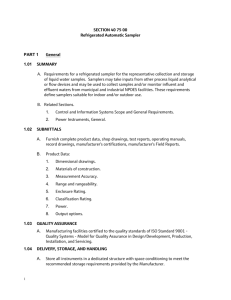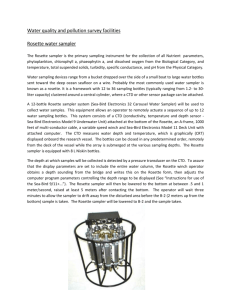Supply list for soil sampling and general notes on sample
advertisement
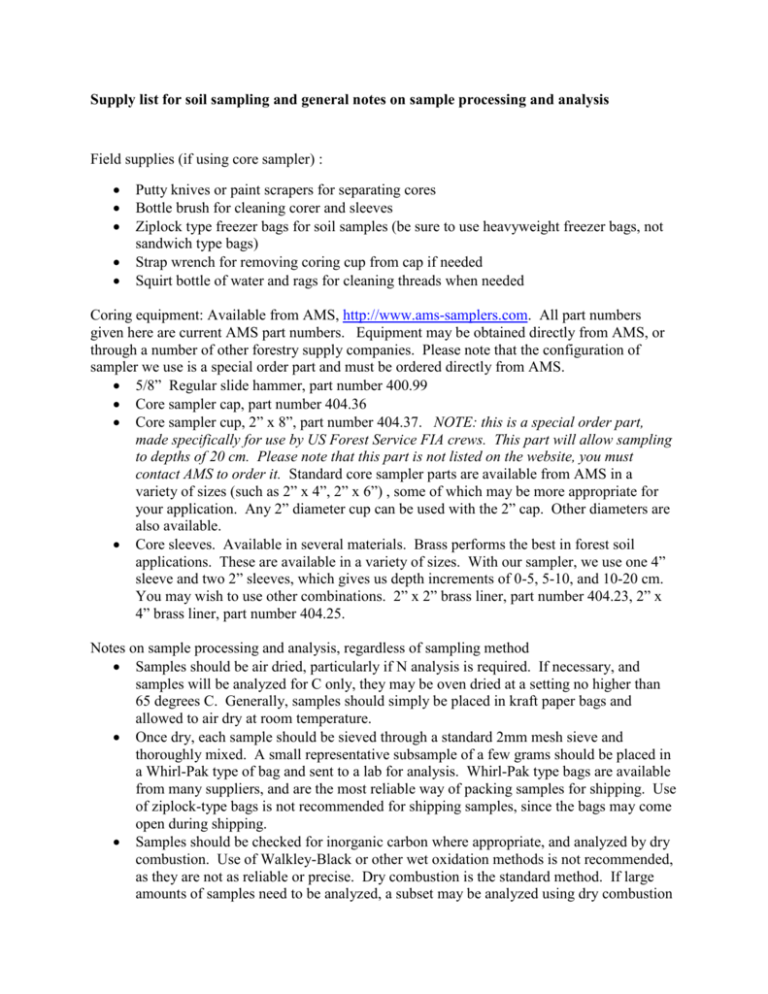
Supply list for soil sampling and general notes on sample processing and analysis Field supplies (if using core sampler) : Putty knives or paint scrapers for separating cores Bottle brush for cleaning corer and sleeves Ziplock type freezer bags for soil samples (be sure to use heavyweight freezer bags, not sandwich type bags) Strap wrench for removing coring cup from cap if needed Squirt bottle of water and rags for cleaning threads when needed Coring equipment: Available from AMS, http://www.ams-samplers.com. All part numbers given here are current AMS part numbers. Equipment may be obtained directly from AMS, or through a number of other forestry supply companies. Please note that the configuration of sampler we use is a special order part and must be ordered directly from AMS. 5/8” Regular slide hammer, part number 400.99 Core sampler cap, part number 404.36 Core sampler cup, 2” x 8”, part number 404.37. NOTE: this is a special order part, made specifically for use by US Forest Service FIA crews. This part will allow sampling to depths of 20 cm. Please note that this part is not listed on the website, you must contact AMS to order it. Standard core sampler parts are available from AMS in a variety of sizes (such as 2” x 4”, 2” x 6”) , some of which may be more appropriate for your application. Any 2” diameter cup can be used with the 2” cap. Other diameters are also available. Core sleeves. Available in several materials. Brass performs the best in forest soil applications. These are available in a variety of sizes. With our sampler, we use one 4” sleeve and two 2” sleeves, which gives us depth increments of 0-5, 5-10, and 10-20 cm. You may wish to use other combinations. 2” x 2” brass liner, part number 404.23, 2” x 4” brass liner, part number 404.25. Notes on sample processing and analysis, regardless of sampling method Samples should be air dried, particularly if N analysis is required. If necessary, and samples will be analyzed for C only, they may be oven dried at a setting no higher than 65 degrees C. Generally, samples should simply be placed in kraft paper bags and allowed to air dry at room temperature. Once dry, each sample should be sieved through a standard 2mm mesh sieve and thoroughly mixed. A small representative subsample of a few grams should be placed in a Whirl-Pak type of bag and sent to a lab for analysis. Whirl-Pak type bags are available from many suppliers, and are the most reliable way of packing samples for shipping. Use of ziplock-type bags is not recommended for shipping samples, since the bags may come open during shipping. Samples should be checked for inorganic carbon where appropriate, and analyzed by dry combustion. Use of Walkley-Black or other wet oxidation methods is not recommended, as they are not as reliable or precise. Dry combustion is the standard method. If large amounts of samples need to be analyzed, a subset may be analyzed using dry combustion for % C, and a muffle furnace for % OM, and a conversion factor relating %OM to % C may be constructed. The bulk of the samples may then be analyzed using the less expensive muffle furnace technique, then the %OM values converted to %C using the conversion factor that was established. Use of a standard % C to % OM conversion factor is not recommended, as the ratio of carbon to organic matter can differ widely among soil types; the relationship should be developed on a site-by-site basis. General soil processing and analysis references: Roberston, G. P., Coleman, D. C., Bledsoe, C. S., and Sollins, P. (Eds). 1999. Standard soil methods for long-term ecological research. Oxford University Press, New York, New York. 462p. Carter, M. R. and Gregorich, E. G. (Eds). 2008. Soil sampling and methods of analysis, second edition. CRC Press, Boca Raton, FL. 1224p.

